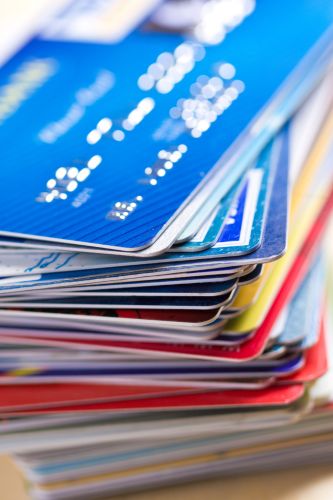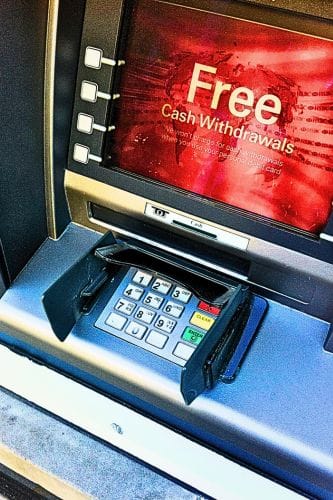Introduction to M-Pesa
When M-Pesa was launched in Kenya in 2007 by Safaricom and Vodafone, it addressed a simple but profound challenge: most people had no access to bank accounts, yet almost everyone had access to a mobile phone. The M-Pesa service turned the mobile handset into a financial access point, enabling people to send, receive, and store money electronically without needing a traditional bank branch.
The “M” in M-Pesa stands for mobile, and “pesa” is the Swahili word for money. The idea was to create a safe, low-cost way for people to move and store money – like sending cash to family in rural areas, paying for goods and services, or storing small balances more securely than a sock full of cash.
What emerged was not just a money transfer tool but a comprehensive mobile wallet ecosystem, where the likes of airtime sellers, shopkeepers, and petrol stations became the “agents” of a distributed banking network.
M-Pesa quickly became embedded in everyday economic life. Salaries could be paid into wallets, school fees settled remotely, and utility bills discharged without standing in queues, and for people living a long way from a bank branch, M-Pesa was transformative. Within a few years, M-Pesa had more registered users than the users of the formal banking systems in Kenya.
The service works on the principles of e-money: each unit of value in the M-Pesa system is backed one-to-one by deposits held in trust accounts at regulated commercial banks. This gives M-Pesa users confidence that their digital balances are real and redeemable. Agents sit at the centre of the model, managing both the cash and the electronic float so customers can convert between the two, seamlessly.
From the outside, M-Pesa looks like it’s a simple phone-based money transfer service, whatever that means! Underneath, it’s a distributed “bucket-of-money” – a carefully balanced system of trust accounts, liquidity management, and reconciliation processes.
M-Pesa is a mobile-first payments network that effectively bypasses the constraints, limitations and accessibility of a legacy banking infrastructure.
To understand how the M-Pesa network operates in practice, it will help to look first at the customer-facing processes – deposits, transfers, and withdrawals – before turning to the back-end mechanics of settlement and reconciliation.
How M-Pesa Works in Practice
Once someone registers for M-Pesa, their mobile phone essentially becomes their bank branch, but whilst the transfers of value are digital, they all start and end with cash. The M-Pesa service is mobile-first, but since it is directly underpinned by real cash, M-Pesa users still need to turn physical money into electronic value and electronic value back into physical cash.
We’ll look at the User Experience in this section and add a little more detail later.
Putting money in (Cash-In)
Imagine there’s a farmer in a rural town who wants to send money to a daughter studying in Nairobi. The farmer goes to the local shop, which also acts as an M-Pesa agent, and hands over 1,000 shillings in notes. The M-Pesa agent takes the cash, taps a few buttons on their own M-Pesa phone, and instantly the farmer gets a message confirming that their M-Pesa balance has gone up by 1,000 shillings. The 1,000 shillings has now become electronic money – underwritten by the 1,000 shillings handed over in real cash – and is ready to be moved anywhere in the country.
Behind the scenes, what’s really happening is that the agent’s stock of electronic money has decreased by 1,000 shillings while their pile of physical cash has increased by exactly the same amount – the agent’s M-Pesa transaction maintains the agent’s total holding by transferring 1,000 shillings to the farmer’s M-Pesa account.
The agent’s total holding therefore doesn’t change, which means there is never a risk of the agent holding customer cash they shouldn’t be holding – the agent’s balance is constant, and the balance in the agent’s “bucket of money” is made up of real money and electronic money.
The system keeps track of the real money and the electronic money associated with each agent.
Sending money
The real cash has now been deposited with the agent and converted to electronic cash, which is represented by the balance linked with the mobile phone. The farmer can now send it to the daughter by entering her phone number, the amount to be sent, and the secret PIN associated with the account. Within a matter of seconds, the daughter in Nairobi receives a text saying she’s received 1,000 shillings.
The money lands in the daughter’s account immediately – no waiting.
Paying for things
The same M-Pesa balance can be used to pay bills, top up airtime, or even pay school fees.
For merchants selling products, M-Pesa can fulfil the same function as a card machine by accepting payments from customers – but the payments and settlements complete in real time, and M-Pesa isn’t reliant on card scheme networks.
If there is a mobile signal, M-Pesa will work, and because the M-Pesa messaging sits at the mobile signalling layer, the mobile signal doesn’t need to be strong.
Taking money out (Cash-Out)
Continuing our story, the daughter in Nairobi needs cash for rent. She makes her way to a petrol station – that also serves as an M-Pesa agent – and asks to withdraw 1,000 shillings. The agent initiates the transaction, and the daughter confirms the request on her phone – her wallet balance goes down, and the agent’s electronic balance goes up. The agent then hands her the 1,000 shillings in notes.
The system has once again simply flipped the balances: the daughter’s electronic money is reduced and the agent’s electronic money is increased, but the agent’s physical cash is reduced by the amount of the transaction, maintaining the agent’s overall real cash and electronic cash position.
The role of agents
It would be very difficult to operate M-Pesa without the agents, as the agents are the points where digital money and physical money meet. These agent service points act as the interface between the real world and the virtual, where cash is transformed from real to digital and from digital to real.
PayPal supports a similar “bucket of money” model but is able to operate on a larger scale across large geographies as converting between real funds and digital funds is a secondary function.
For an agent to operate in this space, they will need to keep enough cash on hand to meet withdrawals, and enough electronic balance to handle deposits. This needs to be managed daily, because too little electronic cash means customers can’t deposit, and too little real cash means customers can’t make withdrawals.
Settlement and the “Bucket of Money”
So far, we could be mistaken for thinking that M-Pesa just looks like money is flying around the country by text message, but of course, it isn’t. The M-Pesa digital cash services can only work if there is something sitting underneath it all, moving the real cash!
That’s where the M-Pesa settlement system comes in.
Every digital shilling that appears in an M-Pesa wallet is backed somewhere in the real financial system by a real shilling. M-Pesa isn’t harvesting a magical money tree, so all the real money that is deposited with agents becomes part of a pool of real money that is held in trust accounts with regulated commercial banks. Similarly, but in reverse, when a withdrawal is made, the withdrawal is taken from the same pool of money.
You can think of M-Pesa as a big bucket of money that belongs collectively to the M-Pesa customers but is distributed across the M-Pesa network between the commercial trust accounts and the agents.
Here’s what happens in practice:
- When the farmer deposits 1000 shillings with the local agent, the system increases the farmer’s M-Pesa balance and reduces the agent’s electronic balance. The agent’s total balance (real + digital) remains the same as the 1000 shillings are now in the till, but the total M-Pesa cash holding has increased by 1000 shillings.
- When someone withdraws cash, the opposite happens: their M-Pesa balance goes down, the agent’s M-Pesa balance goes up, and the agent hands over the cash. The agent’s total balance (real + digital) remains the same as the agent has handed over the cash from the till, but the total M-Pesa cash holding has reduced by the amount of the withdrawal.
At the end of each day, the reconciliation process makes sure all the numbers add up: the sum of all the balances across the M-Pesa system must reconcile with the money sitting in the banks.
Agents will also need to reconcile and rebalance. If an agent has taken in more cash than they’ve paid out, they may need to deposit the surplus at a bank, to raise their electronic cash balance. If they’ve handed out more cash than they’ve taken in, they’ll need to withdraw from their bank to avoid running dry.
What this creates is essentially a distributed balancing act, with thousands of agents across the country constantly swapping between cash and e-money to maintain a sustainable operation.
The trust accounts sit quietly in the background, anchoring the whole thing so that customers can be confident their digital balances are always backed by real value, and this is why M-Pesa has been able to win such deep trust – people know that their electronic shilling isn’t just a number on a screen, but a claim on the big bucket of money held safely in the banking system.
Risks and Resilience in M-Pesa
No payment system is going to survive long without resilience, and people will only trust it if they know their money is safe and if the system keeps running even when things go wrong – M-Pesa is no exception.
Agent float shortages
The most visible risk for customers is walking into a shop and hearing: “Sorry, I don’t have the cash” or “I can’t take any more deposits, my float is finished.” This isn’t a failure of the system, but a liquidity hiccup at the agent level.
To manage this, agents be constantly rebalancing and topping up their e-money at bank branches, swapping float with other agents, or using aggregators that specialise in moving liquidity around. And, because there are so many agents in most towns, a customer can very often just walk next door.
Trust account security
What if a bank holding the trust funds fails? This was anticipated in the design of the underlying financial structure. Instead of depositing all the money with one bank, the funds are spread across several regulated commercial banks. The money is also ring-fenced in trust accounts, which means it can’t be used by the bank for lending or to cover its own liabilities. So, if the bank itself went under, the M-Pesa deposits would still belong to the M-Pesa users.
Operational resilience
What would happen if the system went down? The M-Pesa network has benefitted from heavy investments in redundancy – mirrored data centres, backup servers, and extensive disaster recovery protocols. Transactions are logged in real time, so even in the event of failure, the raw data records aren’t lost, and reconciliations can be rebuilt. There are outages, but when they do happen, they are usually short-lived and don’t result in missing balances.
Fraud and misuse
Few payment systems can escape fraudsters. In M-Pesa’s case, the main risks aren’t technical, instead, they tend to come from social engineering attacks along the lines of “I sent you money by mistake, please refund it”, collusion between agents and customers, or stolen PINs.
Controls include transaction caps, SMS secondary confirmations, strict KYC at sign-up, and monitoring tools that flag suspicious patterns for investigation.
Systemic confidence
As with any payment system, the biggest risk of all is a loss of trust, and because M-Pesa holds such a central role in many economies, any hint of balances being compromised could cause panic, which is why the reconciliation processes are so important.
Summary
M-Pesa is built on the model of a distributed “bucket of money”.
PayPal use the “bucket of money” model, but also link it to external payment services – you can pay into your PayPal account using a debit card, and then use the PayPal balance to send money to another PayPal account holder, and that account holder can hang on to it, pay it onwards or withdraw it from an ATM.
M-Pesa is essentially a distributed version of the PayPal model, supporting real cash along with digital cash. Each agent is the distributed, logical equivalent of PayPal, and each agent could operate independently, although it would negate the whole purpose of M-Pesa. The M-Pesa infrastructure allows for all the funds held in the M-Pesa ecosystem to be accessible to all M-Pesa account holders, and the distributed technology, driven by SMS, allows for cash deposited with one agent to be withdrawn at another.
PayPal is like a single big bucket in one place; M-Pesa spreads the bucket out across thousands of agents.
Genius!








